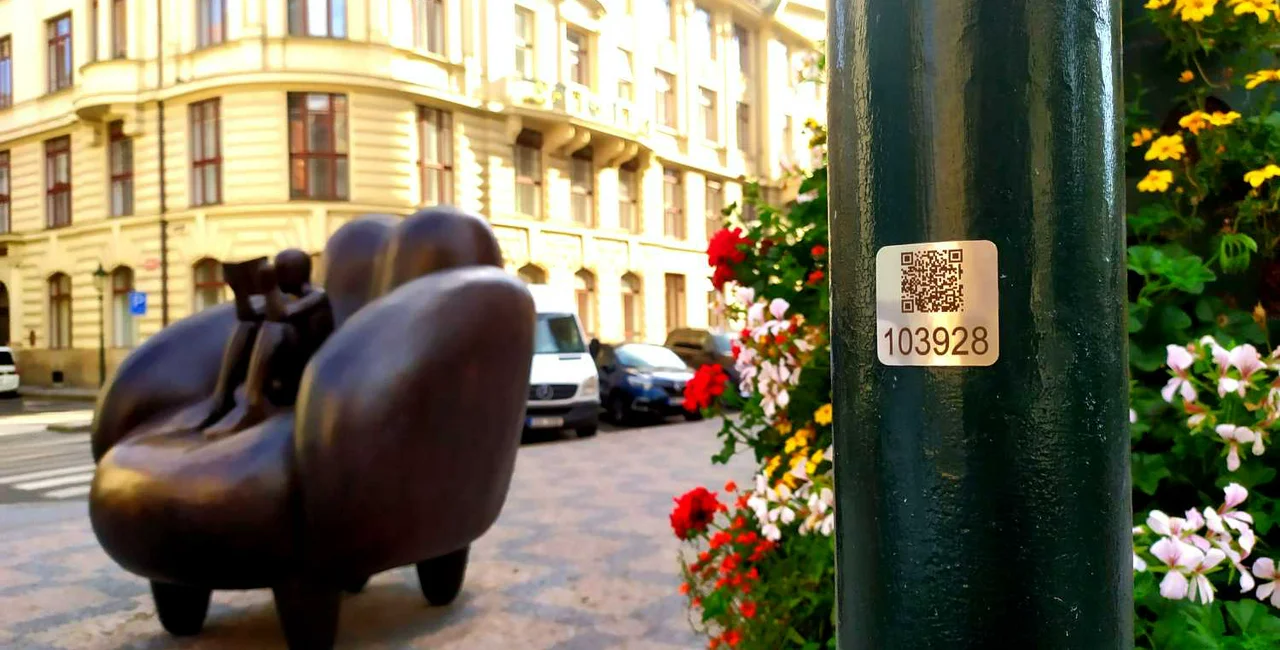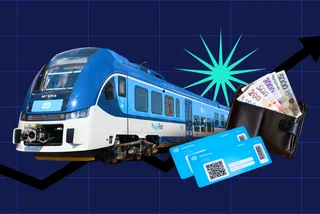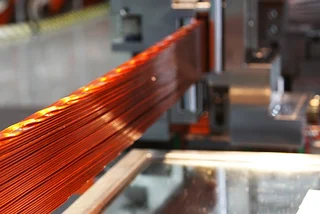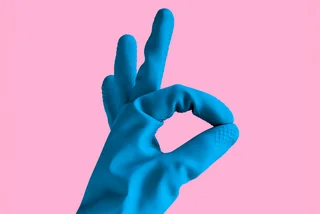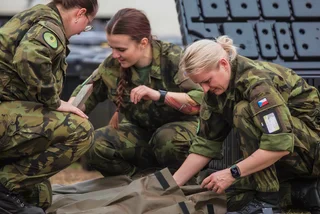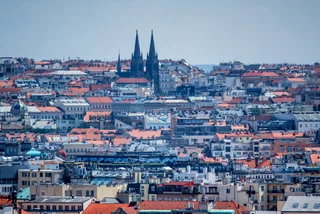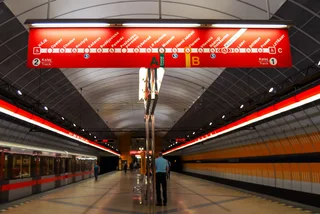Prague’s lamp posts have a feature most people don’t know about. Each pole is numbered, and that can be used to tell several city services the exact location of an incident. Now, QR codes are being added to the poles to bring the concept ibnto the 21st century.
The municipal company Technologie hlavního města Prahy (THMP) began adding QR codes in addition to the identification number on metal tags marking public lighting poles. These will make it easy to report an automobile breakdown or an unauthorized advertisement on public lighting, and in the future they can help the Integrated Rescue System as well as city residents and tourists.
“All 135,000 poles of Prague’s public lighting have a small metal plate with a six-digit number embossed at a height of about 150 centimeters. According to the first double digit, today you can see at a glance which part of the city it is located in. By gradually adding QR codes, the labels will offer people much more information. After loading it with a mobile phone, you will be redirected to the new web application Skenujprahu.cz, which will integrate various data and services,” City Councilor Jan Chabr (United Force for Prague), responsible for city property, said.
According to THMP board chairman Tomáš Jílek, as part of the pilot project, the new application will make it possible to conveniently report lighting malfunctions and illegal decals on lamp posts. It will also provide detailed information on individual light points.
“In the next step, we plan to involve other city companies and the Integrated Rescue System. When you find yourself in an emergency, seconds often play a role. Thanks to loading the application from any street lighting pole, it would be possible not only to contact the fire brigade, police or rescue service quickly, but they will also automatically know exactly where you are or where to find the nearest natural gas valve, for example,” Jílek said.
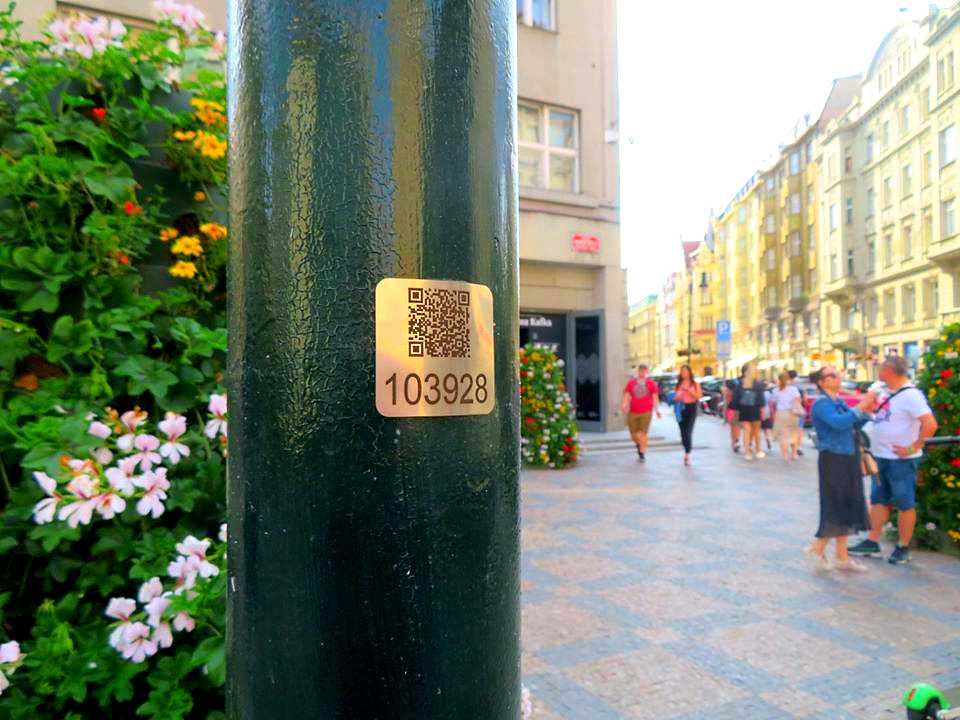
Negotiations are also being held with the Czech Police on participating in the application. “After scanning the QR code from the pole, the application could, for example, search for the nearest police station, including its operating hours,” Jílek said.
QR codes on lamp poles should be used in the following phases by tourists who often do not know where they are and do not know the names of streets. “They could advise them on a trip or recommend the nearest tourist destinations. This is one of the reasons why the pilot project takes place in the city center, where people for outside Prague move about the most. However, there are many more possibilities; together with other partners we plan to implement other uses for both Praguers and tourists. Of course, there will also be various language versions of the portal,” Chabr said.
THMP will produce new labels with a QR code itself directly at its Holešovice headquarters. “We bought a special laser for engraving at the beginning of this year. First, we create a computer design containing a unique six-digit number and its corresponding QR code, which is then rewritten on a prepared metal label. The result of laser technology is an accurate and permanent inscription that can only be removed with brute force,” Jílek said.
In June, THMP will also launch a new mobile application that will allow you to easily and from anywhere report a lamp failure or illegal stickers on the Prague light poles. “In this case, the user does not have to scan the QR code, but the application will be stored directly in his smartphone. For example, if you see an unlit light from a car, all you have to do is take a picture of it and we can locate it ourselves via GPS,” Jílek said.
After the information is sent, it reaches the THMP, dispatch center, which evaluates it and sends its employees to the site. The application called “Prague is shining” (Praha svítí) is already available for the Android platform, for the iOS operating system it will be available in the coming days, after the completion of the approval process.
Until the Integrated Rescue Service adopts the QR codes, people can still use the six digit number over the phone to give their location. “We have a database of these numbers that is accessible to the components of the city’s Integrated Rescue System. Emergency telephone operators are therefore able to locate the caller very quickly when he or she reports the number of the nearest public lighting column. In practice, it helps a lot,” Chabr said in early 2019, when the plan for QR codes was first announced.
The system of numbered poles has proven to be particularly important in traffic accidents, where people are particularly unlikely to be aware of the exact location. It is also useful with giving the locations of injured or sick people in public areas.
The public lighting system is managed by Technologie hlavního města Prahy, which was founded in the middle of 2018 as a fully city-owned entity. The company is also working to introduce Smart City solutions to make lighting more effective and efficient. The company will be cooperating on the introduction of the new plaques.
Hopefully, the QR codes on the lamp poles will be more effective than the QR code in black-and-white paving stones in front of City Hall. It was originally intended to link to an information app, but now goes to the 1987 Rick Astley song “Never Gonna Give You Up.”












 Reading time: 4 minutes
Reading time: 4 minutes 